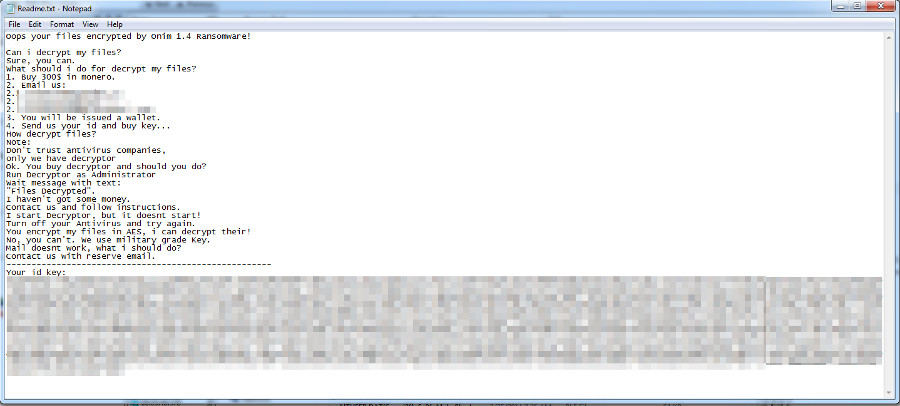Ransom.Win32.STOP.THOABDAI
Trojan.Win32.Chapak.bugg (KASPERSKY); a variant of Win32/Kryptik.GOWQ trojan (NOD32)
Windows


Threat Type: Ransomware
Destructiveness: No
Encrypted:
In the wild: Yes
OVERVIEW
Downloaded from the Internet, Dropped by other malware
This Ransomware arrives on a system as a file dropped by other malware or as a file downloaded unknowingly by users when visiting malicious sites.
It attempts to access certain websites. However, the websites are inaccessible as of this writing.
It drops files as ransom note.
TECHNICAL DETAILS
335,360 bytes
EXE
Yes
04 Feb 2019
Downloads files, Connects to URLs/IPs
Arrival Details
This Ransomware arrives on a system as a file dropped by other malware or as a file downloaded unknowingly by users when visiting malicious sites.
Installation
This Ransomware drops the following copies of itself into the affected system:
- %AppDataLocal%\{ID}\{Malware Filename}.exe
(Note: %AppDataLocal% is the Local Application Data folder, which is usually C:\Documents and Settings\{user name}\Local Settings\Application Data on Windows 2000, XP, and Server 2003, or C:\Users\{user name}\AppData\Local on Windows Vista, 7, and 8.)
Autostart Technique
This Ransomware adds the following registry entries to enable its automatic execution at every system startup:
HKEY_CURRENT_USER\Software\Microsoft\
Windows\CurrentVersion\Run
SysHelper = %AppDataLocal%\{ID}\{Malware Filename}.exe --AutoStart
Download Routine
This Ransomware connects to the following website(s) to download and execute a malicious file:
- http://{BLOCKED}s.ug/xxx/updatewin1.exe
- http://{BLOCKED}s.ug/xxx/updatewin2.exe
- http://{BLOCKED}s.ug/xxx/updatewin.exe
- http://{BLOCKED}s.ug/xxx/3.exe
- http://{BLOCKED}s.ug/TRytaersdasdahjsdhjasGGGHGHfsdOLD/get.php?pid=135E1384A44D7DC0444C191A75BD82E4
Other Details
This Ransomware attempts to access certain websites. However, the websites are inaccessible as of this writing.
Ransomware Routine
This Ransomware appends the following extension to the file name of the encrypted files:
- .adobe
It drops the following file(s) as ransom note:
- {Directory}:/_openme.txt

SOLUTION
9.850
14.770.05
24 Jan 2019
14.771.00
25 Jan 2019
Step 1
Before doing any scans, Windows XP, Windows Vista, and Windows 7 users must disable System Restore to allow full scanning of their computers.
Step 2
Note that not all files, folders, and registry keys and entries are installed on your computer during this malware's/spyware's/grayware's execution. This may be due to incomplete installation or other operating system conditions. If you do not find the same files/folders/registry information, please proceed to the next step.
Step 3
Restart in Safe Mode
Step 4
Delete this registry value
Important: Editing the Windows Registry incorrectly can lead to irreversible system malfunction. Please do this step only if you know how or you can ask assistance from your system administrator. Else, check this Microsoft article first before modifying your computer's registry.
- In HKEY_CURRENT_USER\Software\Microsoft\Windows\CurrentVersion\Run
- SysHelper = %AppDataLocal%\{ID}\{Malware Filename}.exe --AutoStart
- SysHelper = %AppDataLocal%\{ID}\{Malware Filename}.exe --AutoStart
Step 5
Search and delete these files
- {Directory}:/_openme.txt
Step 6
Scan your computer with your Trend Micro product to delete files detected as Ransom.Win32.STOP.THOABDAI. If the detected files have already been cleaned, deleted, or quarantined by your Trend Micro product, no further step is required. You may opt to simply delete the quarantined files. Please check the following Trend Micro Support pages for more information:
Step 7
Restore encrypted files from backup.
Did this description help? Tell us how we did.